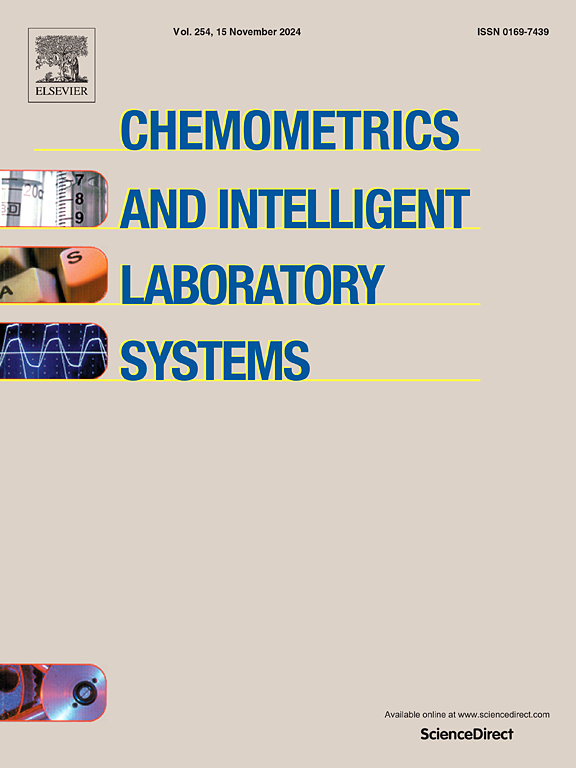评估子空间聚类技术在高光谱成像中的有效降维效果
IF 3.8
2区 化学
Q2 AUTOMATION & CONTROL SYSTEMS
Chemometrics and Intelligent Laboratory Systems
Pub Date : 2025-06-11
DOI:10.1016/j.chemolab.2025.105463
引用次数: 0
摘要
高光谱图像处理(HSI)是遥感、医学成像和各种其他领域的关键任务,因为它能够捕获多个波段的详细光谱信息。然而,高光谱数据的高维往往导致计算负担和复杂性的增加。本研究探讨了子空间聚类技术在高光谱图像降维中的应用,重点研究了稀疏子空间聚类(SSC)、低秩表示(LRR)和光谱聚类等方法。这些技术因其在降低数据维数的同时保留光谱和空间特征的能力而受到评估。通过详细的对比,研究发现SSC在分类精度和计算效率方面表现优异,特别是在处理高维高光谱图像数据集的复杂模式方面。从该分析中获得的见解有助于更好地理解不同子空间聚类方法的优势和局限性,为图像处理和高光谱数据分析的未来发展提供有价值的指导。本文章由计算机程序翻译,如有差异,请以英文原文为准。
Evaluating subspace clustering techniques for effective and efficient dimensionality reduction in hyperspectral imaging
Hyperspectral image processing (HSI) is a critical task in remote sensing, medical imaging, and various other fields due to its capacity to capture detailed spectral information across numerous bands. However, the high dimensionality of hyperspectral data often leads to increased computational burden and complexity. This study investigates the use of subspace clustering techniques for dimensionality reduction in hyperspectral images, focusing on methods such as sparse subspace clustering (SSC), low-rank representation (LRR), and spectral clustering. These techniques are evaluated for their ability to preserve both spectral and spatial features while reducing data dimensionality. Through detailed comparison, the study finds that SSC offers superior performance in terms of classification accuracy and computational efficiency, particularly in handling the intricate patterns in high-dimensional hyperspectral image datasets. The insights gained from this analysis contribute to a better understanding of the strengths and limitations of different subspace clustering methods, providing valuable guidance for future advancements in image processing and hyperspectral data analysis.
求助全文
通过发布文献求助,成功后即可免费获取论文全文。
去求助
来源期刊
CiteScore
7.50
自引率
7.70%
发文量
169
审稿时长
3.4 months
期刊介绍:
Chemometrics and Intelligent Laboratory Systems publishes original research papers, short communications, reviews, tutorials and Original Software Publications reporting on development of novel statistical, mathematical, or computer techniques in Chemistry and related disciplines.
Chemometrics is the chemical discipline that uses mathematical and statistical methods to design or select optimal procedures and experiments, and to provide maximum chemical information by analysing chemical data.
The journal deals with the following topics:
1) Development of new statistical, mathematical and chemometrical methods for Chemistry and related fields (Environmental Chemistry, Biochemistry, Toxicology, System Biology, -Omics, etc.)
2) Novel applications of chemometrics to all branches of Chemistry and related fields (typical domains of interest are: process data analysis, experimental design, data mining, signal processing, supervised modelling, decision making, robust statistics, mixture analysis, multivariate calibration etc.) Routine applications of established chemometrical techniques will not be considered.
3) Development of new software that provides novel tools or truly advances the use of chemometrical methods.
4) Well characterized data sets to test performance for the new methods and software.
The journal complies with International Committee of Medical Journal Editors'' Uniform requirements for manuscripts.

 求助内容:
求助内容: 应助结果提醒方式:
应助结果提醒方式:


